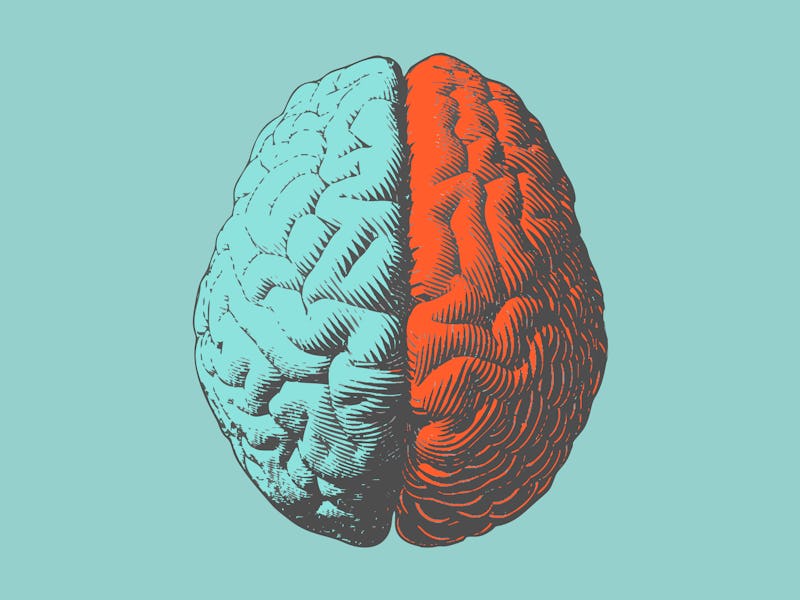Electrifying brains may be the key to restoring sight — study
By applying electric current directly to electrodes on the brain, researchers were able to restore "sight" to blind participants.

Millions of Americans struggle with visual impairment, ranging from partial to total loss of sight, which can negatively affect their ability to easily navigate a world designed predominately for those with sight. But a new technique could restore sight directly to those with visual impairment
Using electrodes implanted on the surface of participants' visual cortexes, where the brain controls what we see, scientists have discovered a way to apply electric currents so that participants can see ghost-like visual "phosphenes" (or spots of light) in the shape of specific objects or characters, such as the letter 'N.'
With the help of machine learning algorithms, like those used to provide "vision" to self-driving cars, the researchers say a system like this could help the visually impaired navigate their environments with ease.
"They described seeing glowing spots or lines forming the letters, like skywriting."
In order to experience the visual world around us, we rely on a simple relay between our eyes and our brains. First, our eyes receive light bouncing off objects around us and second, they transmit that information to our brains for processing. For those with vision loss, often the actual "impairment" itself is in the first part of this chain reaction -- the eyes -- instead of the brain. Meaning that the visual cortex itself may be functioning but is simply not receiving any signal from the eyes.
Because of this information, scientists have been working for well over five-decades to design something called a visual cortical prosthetic (VCP) that can stimulate the visual part of the brain in order to mimic the information it might typically receive from the eyes. But, so far this approach has seen limited success in stimulating more than just individual spots of light.
But researchers from the Baylor College of Medicine in Houston write in a new study, published Thursday in the journal Cell, that their approach could change that. Instead of stimulating different electrodes at once to try and create a shape, the researchers dynamically activate electrodes in sequence and with varying levels of current.
"When we used electrical stimulation to dynamically trace letters directly on patients' brains, they were able to 'see' the intended letter shapes and could correctly identify different letters," senior author Daniel Yoshor said in a statement. "They described seeing glowing spots or lines forming the letters, like skywriting."
Both blind and sighted participants were able to accurately recognize and recreate images that were first communicated to them by the cranial electrodes.
In their study, the team tested their approach on both sighted and blind participants with surface-level electrode implants on their visual cortexes.
To start, participants had shapes communicated to them through stimulating many electrodes at once -- as was the gold-standard prior to this new research. Previous research had theorized that this approach would work like pixels on a computer screen and that several discrete spots of light would combine in a single image. However, in practice, they found that not to be the case. Instead, participants reported that these discrete phosphenes blurred together to create two large spots that were unrecognizable as any particular shape.
But when the research team applied their new approach, the researchers found that participants were able to correctly identify and recreate the images with over 90 percent accuracy in some cases.
"Rather than trying to build shapes from multiple spots of light, we traced outlines," first author Michael Beauchamp said in a statement. "Our inspiration for this was the idea of tracing a letter in the palm of someone's hand."
Part of why this worked, the researchers explained in the study, is that they were able to control the amount of current going into these electrodes, so that virtual electrodes were being interpreted as between individual physical electrodes. This trick gave the impression that more electrodes were being stimulated than really were, creating the feeling of continuous sequential stimulation -- like tracing.
By stimulating electrodes on the brain in sequence, instead of all at once, researchers were able to create the effect of tracing shapes on the brain.
"An important next step will be to work with neuroengineers to develop electrode arrays with thousands of electrodes, allowing us to stimulate more precisely," says Beauchamp. "Together with new hardware, improved stimulation algorithms will help realize the dream of delivering useful visual information to blind people."
The researchers also write in their study that the addition of machine learning algorithms, such as machine vision used to help self-driving cars "see," could one day be incorporated into this technology as well, making it possible for those with vision loss to interact with visual world even more naturally. While Elon Musk's Neuralink may be already implanted in a human participant by this time next year, it's clear that Musk is far from the only person in this arena and that there is still much about the brain that the Neuralink chip can't begin to encompass.
Abstract: A visual cortical prosthesis (VCP) has long been proposed as a strategy for restoring useful vision to the blind, under the assumption that visual percepts of small spots of light produced with electrical stimulation of visual cortex (phosphenes) will combine into coherent percepts of visual forms, like pixels on a video screen. We tested an alternative strategy in which shapes were traced on the surface of visual cortex by stimulating electrodes in dynamic sequence. In both sighted and blind participants, dynamic stimulation enabled accurate recognition of letter shapes predicted by the brain’s spatial map of the visual world. Forms were presented and recognized rapidly by blind participants, up to 86 forms per minute. These findings demonstrate that a brain prosthetic can produce coherent percepts of visual forms.